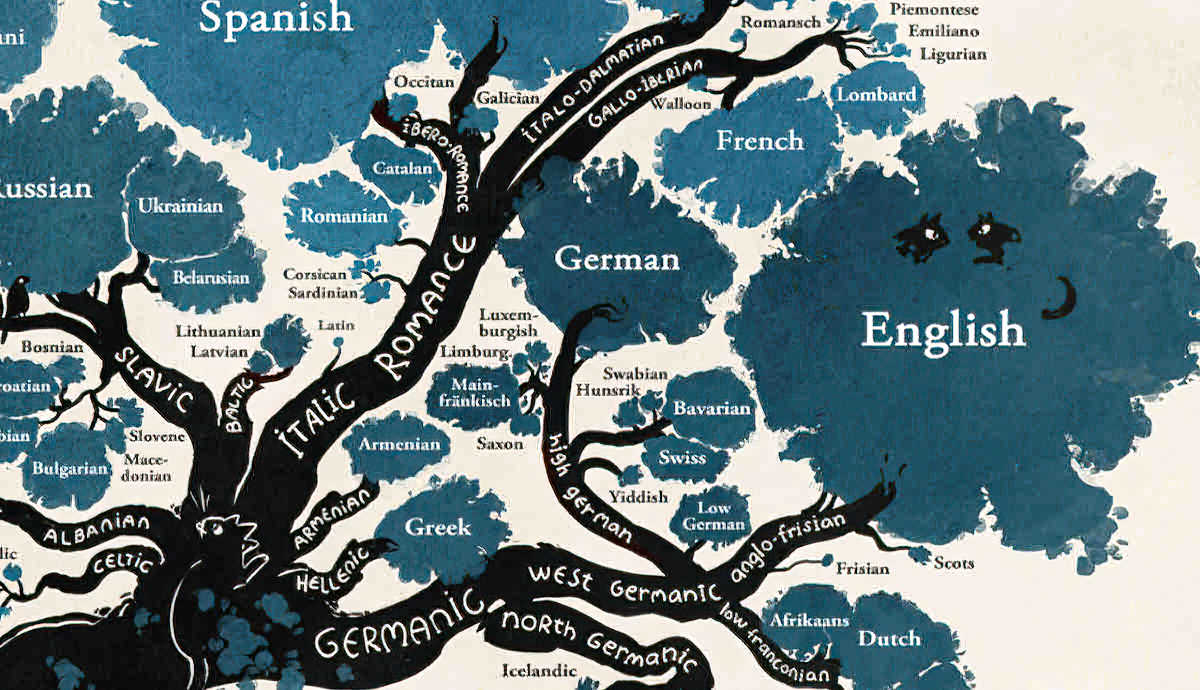
The English language names of the four seasons – spring, summer, autumn, and winter – are so entrenched that it is hard to imagine them being called anything else. Based around the shifting patterns of the weather, each season has its own unique characteristics (depending on where you live in the world), and they bring structure and order into the annual calendar, breaking down time into manageable chunks and allowing us to make greater sense of the chaos that so often accompanies nature. But how did these seasons get their names?

Before looking into each season’s etymology in more detail, it’s worth noting the word ‘season’ itself has a long history. Derived from the Old French word ‘seison’, meaning ‘sowing’, or ‘planting,’ it originally made reference to the act of preparing plants for growth. In around the 13th century, the word’s meaning shifted to ‘seed-time,’ referring to the various times of year that were optimal for planting seeds to encourage maximum crop yields. From here, the word evolved into the umbrella term ‘season’ as we know it today, while each time of year developed its own distinct name.
Spring

The lighter, brighter months following winter were once known as ‘lent.’ This word was derived from the West Germanic word ‘langitinaz’, meaning the lengthening of the days, a nod towards spring’s increased daylight hours. Today the word ‘lent’ lives on today in the Christian calendar, describing the 40-day period between Ash Wednesday and Easter when Christians typically give up something they enjoy, typically chocolate or other treats.
However, in around the 14th century, this period became widely known as ‘springing time’, in reference to the plants that came springing up from the ground following their winter dormancy. In the following centuries this evolved into ‘spring-time’, and eventually it was shortened into ‘spring’.
Summer

The history of the word summer is a little vaguer and trickier to trace than some of the other seasons. It is thought by linguists that the word ’summer’ has roots in the Old English word ‘sumor’, which evolved into ‘sumer’ during Middle England, both of which were words used to describe the warmest and most temperate time of year when plants and flowers were in full bloom. The word ‘sumor’ has origins in the Germanic word ‘sumur’, which in turn came from the Proto-Indo-European (PIE) root sam- or sem-, meaning together, or one. While this might seem a loose connection to the season of summer, many see the word’s origins as a reference to the outdoor gatherings and social events that typically take place in the summer months.
Fall, or Autumn

The pre-winter months when summer is in decline have had several names through the ages, most notably, harvest, autumn, and fall. This time of year was widely known as ‘harvest’ until at least the 12th century, a fitting name that referred to the harvesting of crops grown over spring and summer to be stored inside for the winter months. The word ‘harvest’ came from the Old Norse word ‘haust’, meaning ‘to gather or pluck,’ and is still widely used in relation to farming today.
Descriptions of this season as autumn first emerged during the 12-14th centuries. The word has been traced back to the French word ‘automne’, the Old French ‘sutumpne,’ and the Latin ‘autumnus’, which is similar to the Latin verb ‘augere’, meaning ‘to increase.’ It is possible this was a nod towards the increased crop supplies gathered together following the annual harvest.

Meanwhile the predominant use of the term ‘fall’ across the United States to describe this season has been traced by historians back to 16th century England, and the popular saying, ‘fall of the leaf’, to describe the cyclical process when leaves change color and fall from trees. Colonists carried the term to the United States and it became increasingly popular, particularly throughout North America where the shifting tree colors and falling leaves are especially magnificent.
Winter

Much like summer, the roots of the word ‘winter’ are somewhat vague and difficult to trace. It is thought the naming of this season goes back to the Germanic word ‘wentruz’, which in turn has roots in the Proto-Indo-European ‘wed-‘, meaning ‘wet’, or wind-, meaning ‘white’ (but also possibly wind!). It makes sense that words making reference to wet, wind, and the white of snow evolved into the description of winter as we know it today, at least throughout the Western Hemisphere.










